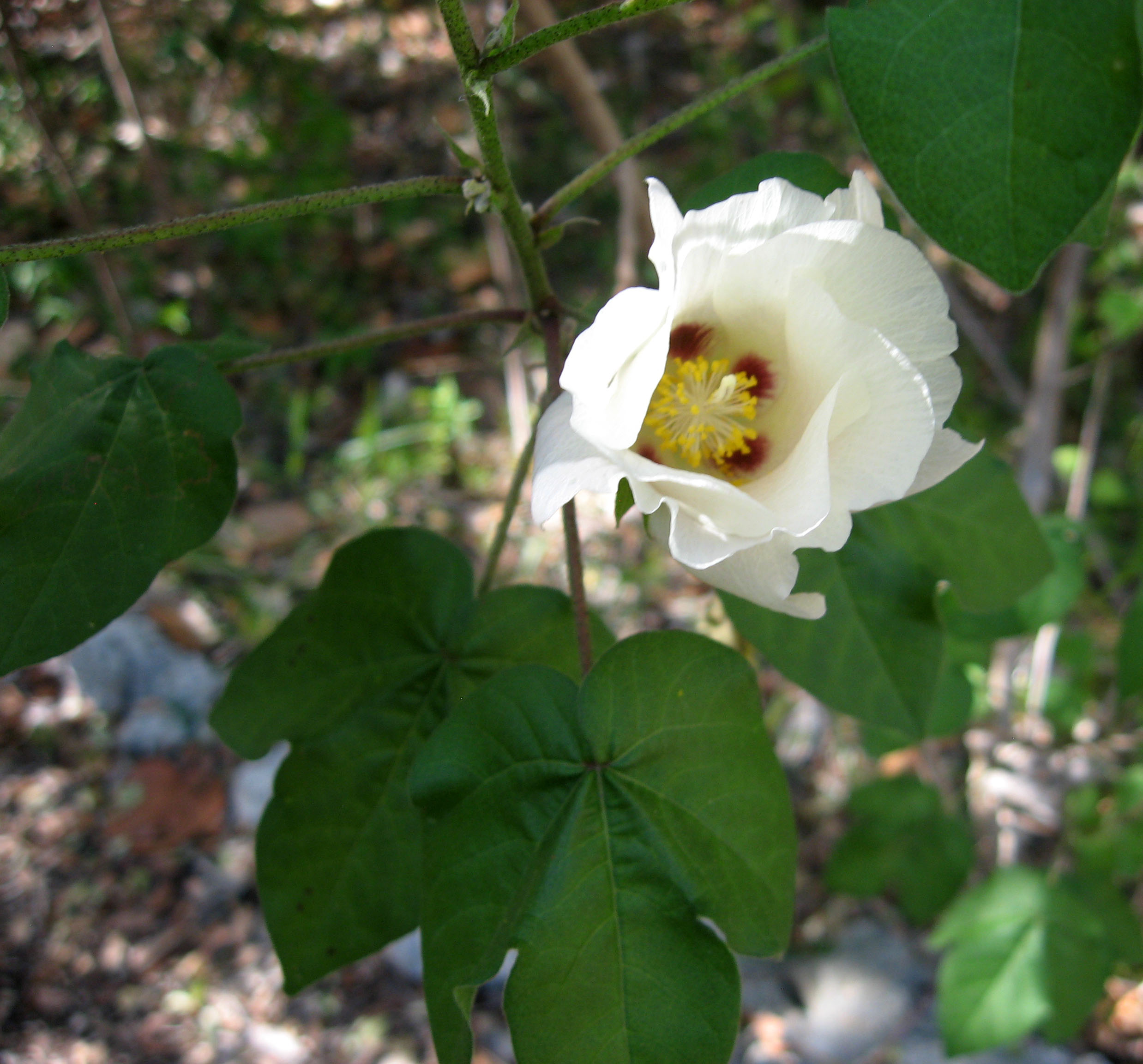Gossypium Hirsutum on:
[Wikipedia]
[Google]
[Amazon]
''Gossypium hirsutum'', also known as upland cotton or Mexican cotton, is the most widely planted species of  This species shows extrafloral nectar production.Röse USR, Lewis J, Tumlinson JH. Extrafloral nectar from cotton (Gossypium hirsutum) as a food source for parasitic wasps. Functional Ecology 2006; 20:67-74.
This species shows extrafloral nectar production.Röse USR, Lewis J, Tumlinson JH. Extrafloral nectar from cotton (Gossypium hirsutum) as a food source for parasitic wasps. Functional Ecology 2006; 20:67-74.
Cotton Botany at Cotton Inc.
{{Taxonbar, from=Q133481 Cotton hirsutum Fiber plants Flora of Florida Crops originating from Mexico Flora of French Polynesia Flora of Samoa Flora of Jamaica Flora of Puerto Rico Crops originating from the Pacific Crops originating from South America Crops originating from the United States Plants described in 1763 Taxa named by Carl Linnaeus
cotton
Cotton is a soft, fluffy staple fiber that grows in a boll, or protective case, around the seeds of the cotton plants of the genus '' Gossypium'' in the mallow family Malvaceae. The fiber is almost pure cellulose, and can contain minor pe ...
in the world. Globally, about 90% of all cotton production is of cultivars derived from this species. In the United States
The United States of America (U.S.A. or USA), commonly known as the United States (U.S. or US) or America, is a country Continental United States, primarily located in North America. It consists of 50 U.S. state, states, a Washington, D.C., ...
, the world's largest exporter of cotton, it constitutes approximately 95% of all cotton production. It is native to Mexico
Mexico (Spanish language, Spanish: México), officially the United Mexican States, is a List of sovereign states, country in the southern portion of North America. It is borders of Mexico, bordered to the north by the United States; to the so ...
, the West Indies
The West Indies is a subregion of North America, surrounded by the North Atlantic Ocean and the Caribbean Sea that includes 13 independent island countries and 18 dependencies and other territories in three major archipelagos: the Greate ...
, northern South America, Central America and possibly tropical Florida.
Archeological evidence from the Tehuacan Valley in Mexico
Mexico (Spanish language, Spanish: México), officially the United Mexican States, is a List of sovereign states, country in the southern portion of North America. It is borders of Mexico, bordered to the north by the United States; to the so ...
shows the cultivation of this species as long ago as 3,500 BC, although there is as yet no evidence as to exactly where it may have been first domesticated. This is the earliest evidence of cotton cultivation in the Americas found thus far.
''Gossypium hirsutum'' includes a number of varieties or cross-bred cultivar
A cultivar is a type of cultivated plant that people have selected for desired traits and when propagated retain those traits. Methods used to propagate cultivars include: division, root and stem cuttings, offsets, grafting, tissue culture ...
s with varying fiber lengths and tolerances to a number of growing conditions. The longer length varieties are called "long staple upland" and the shorter length varieties are referred to as "short staple upland". The long staple varieties are the most widely cultivated in commercial production.
Besides being fibre crops, ''Gossypium hirsutum'' and ''Gossypium herbaceum
''Gossypium herbaceum'', commonly known as Levant cotton, is a species of cotton native to the semi-arid regions of sub-Saharan Africa and Arabia, where it still grows in the wild as a perennial shrub.
Description
''G. herbaceum'' has high stems ...
'' are the main species used to produce cottonseed oil
Cottonseed oil is cooking oil from the seeds of cotton plants of various species, mainly '' Gossypium hirsutum'' and ''Gossypium herbaceum'', that are grown for cotton fiber, animal feed, and oil.
Cotton seed has a similar structure to other oi ...
.
The Zuni people
The Zuni ( zun, A:shiwi; formerly spelled ''Zuñi'') are Native American Pueblo peoples native to the Zuni River valley. The Zuni are a Federally recognized tribe and most live in the Pueblo of Zuni on the Zuni River, a tributary of the Li ...
use this plant to make ceremonial garments, and the fuzz is made into cords and used ceremonially.
 This species shows extrafloral nectar production.Röse USR, Lewis J, Tumlinson JH. Extrafloral nectar from cotton (Gossypium hirsutum) as a food source for parasitic wasps. Functional Ecology 2006; 20:67-74.
This species shows extrafloral nectar production.Röse USR, Lewis J, Tumlinson JH. Extrafloral nectar from cotton (Gossypium hirsutum) as a food source for parasitic wasps. Functional Ecology 2006; 20:67-74.
Synonyms
*''Gossypium barbadense'' var. ''marie-galante'' (G. Watt) A. Chev., Rev. Int. Bot. Appl Agric. Trop. 18:118. 1938. *''Gossypium jamaicense'' Macfad., Fl. Jamaica 1:73. 1837. *''Gossypium lanceolatum'' Tod., Relaz. cult. coton. 185. 1877. *''Gossypium marie-galante'' G. Watt, Kew Bull. 1927:344. 1927. *''Gossypium mexicanum'' Tod., Ind. sem. panorm. 1867:20, 31. 1868. *''Gossypium morrillii'' O. F. Cook & J. Hubb., J. Washington Acad. Sci. 16:339. 1926. *''Gossypium palmeri'' G. Watt, Wild cult. cotton 204, t. 34. 1907. *''Gossypium punctatum'' Schumach., Beskr. Guin. pl. 309. 1827. *''Gossypium purpurascens'' Poir., Encycl. suppl. 2:369. 1811. *''Gossypium religiosum'' L., Syst. nat. ed. 12, 2:462. 1767. *''Gossypium schottii'' G. Watt, Wild cult. cotton 206. 1907. *''Gossypium taitense'' Parl., Sp. Cotoni 39, t. 6, fig. A. 1866. *''Gossypium tridens'' O. F. Cook & J. Hubb., J. Washington Acad. Sci. 16:547. 1926.References
External links
Cotton Botany at Cotton Inc.
{{Taxonbar, from=Q133481 Cotton hirsutum Fiber plants Flora of Florida Crops originating from Mexico Flora of French Polynesia Flora of Samoa Flora of Jamaica Flora of Puerto Rico Crops originating from the Pacific Crops originating from South America Crops originating from the United States Plants described in 1763 Taxa named by Carl Linnaeus